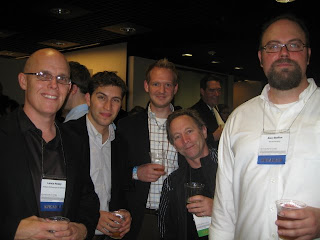
BALTIMORE DESIGN CONVERSATION #4
Wednesday, December 3, 2008
6:30pm—8:30pm
@ Windup Space, 12 North Avenue
a/v system with laptop computer and projector will be available
This Month's Theme: Vacant Baltimore
Join us for an open discussion on design ideas for creative reuse of abandoned buildings and vacant lots in Baltimore (arguably the city’s largest natural resource).
We will project slides of vacant sites in Baltimore and open up the floor to conversation. Paper and pens will be provided for drawn or written suggestions. Everyone is invited to bring digital images of Baltimore's vacant sites for consideration. Practical, purely theoretical, and preposterous ideas are encouraged. All are welcome!
There will also be some short presentations.
For more information contact Gary Kachadourian: GKachadourian@promotionandarts.com
6:30pm—8:30pm
@ Windup Space, 12 North Avenue
a/v system with laptop computer and projector will be available
This Month's Theme: Vacant Baltimore
Join us for an open discussion on design ideas for creative reuse of abandoned buildings and vacant lots in Baltimore (arguably the city’s largest natural resource).
We will project slides of vacant sites in Baltimore and open up the floor to conversation. Paper and pens will be provided for drawn or written suggestions. Everyone is invited to bring digital images of Baltimore's vacant sites for consideration. Practical, purely theoretical, and preposterous ideas are encouraged. All are welcome!
There will also be some short presentations.
For more information contact Gary Kachadourian: GKachadourian@promotionandarts.com













































